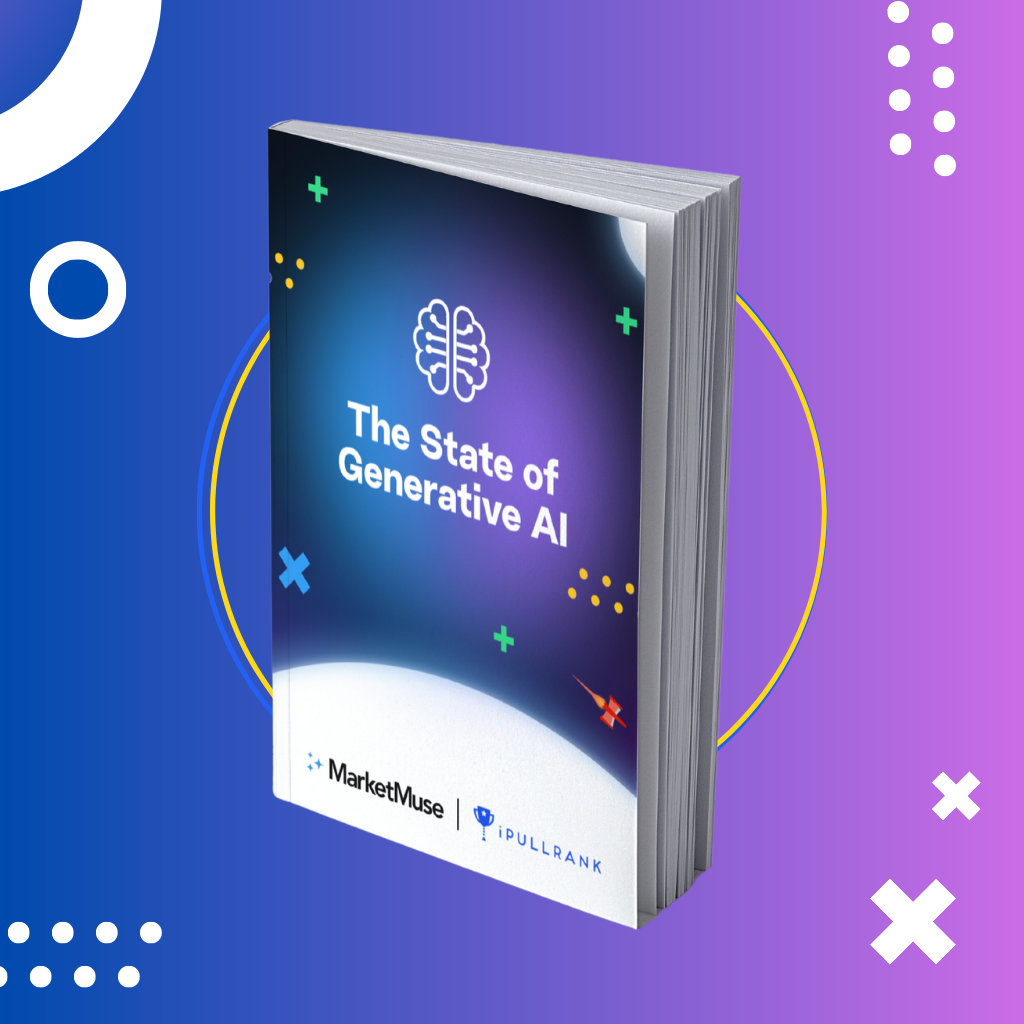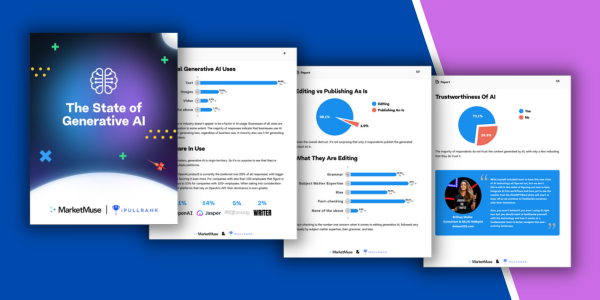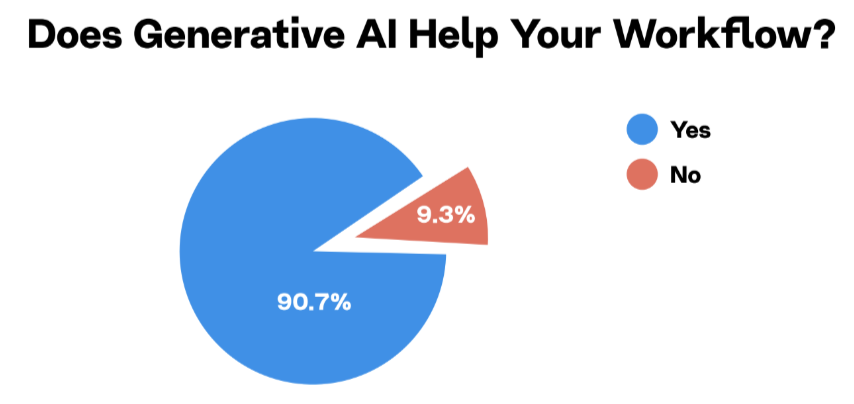


The State of Generative AI
Has your organization flirted with the idea of using generative AI to improve your productivity, output, and marketing efforts?
The adoption of generative AI has been rapid, but we wanted to determine how it’s being used, where the hesitation exists, and the extent to which it’s being implemented at an individual, team, and organizational level.
We surveyed over 100 marketing leaders and have analyzed the findings so you can see where you stand among your peers and competitors.

What's inside The State of Generative AI Report:

Currently, while some businesses are in a holding on to the old way of doing things, others are actively venturing into experimentation with generative AI.
This is the moment to establish procedures and guidelines for your AI deployment.
What better way to understand the capabilities, limitations, and use cases of this technology than to get the information directly from other organizations just like yours.
In this report, we provide the data and analysis you need to stay informed on the forthcoming transformation in SEO and content.
- 20+ pages of AI generation survey data and analysis
- Insights from industry experts on strategy, implementation, and governance.
- The history of Natural Language Generation for Content and SEO
The intent of this report is to evaluate the current perception, adoption, and future of Al-generated content. In this case, we are only referring to Al-generated text (for example, articles, ad copy, idea generation):
- The State of Generative AI And SEO
- Survey Results: Generative Al for Idea Generation
- Survey Results: Does Al Help or Hinder Your Workflow?
- Survey Results: Trust and Adoption
- The Coming Tidal Wave of Al-Generated Content
- How Should Organizations Approach Their Generative Al Content Strategy?
Included: Insights from John Doherty of Editor Ninja on future-proofing your editorial process for generative AI content.
The State of Generative AI
Uncover key insights on leveraging generative AI in for your business
The State of Generative AI Report | Sneak Peek
Does AI help or hinder your workflow?
Introducing generative AI into your production workflow comes with opportunities and risks. Ideation, summarization, brief creation, and categorization can all be automated with free and paid tools. Content generation can be scaled. But despite the amazing advancements of large language models (LLMs), there are significant limitations that need to be considered by organizations. Prompt Engineering is a new skill set that requires finetuning to deliver an output that matches your expectations. LLMs confidently incorporate factually inaccurate content in the output. There are inherent biases in the training models. But with the mainstream introduction of the tool, adoption feels necessary for individuals and organizations.
As professionals begin experimenting with these generative AI solutions, they’re also required to adjust their processes, account for the liabilities, and develop their own personal and organizational guardrails as they augment their content generation. We wanted to tap into that tension among our survey participants, by asking them whether the tools and use cases have helped them or infringed upon their workflows.


Find out what other complex and insightful findings we uncovered in our survey.